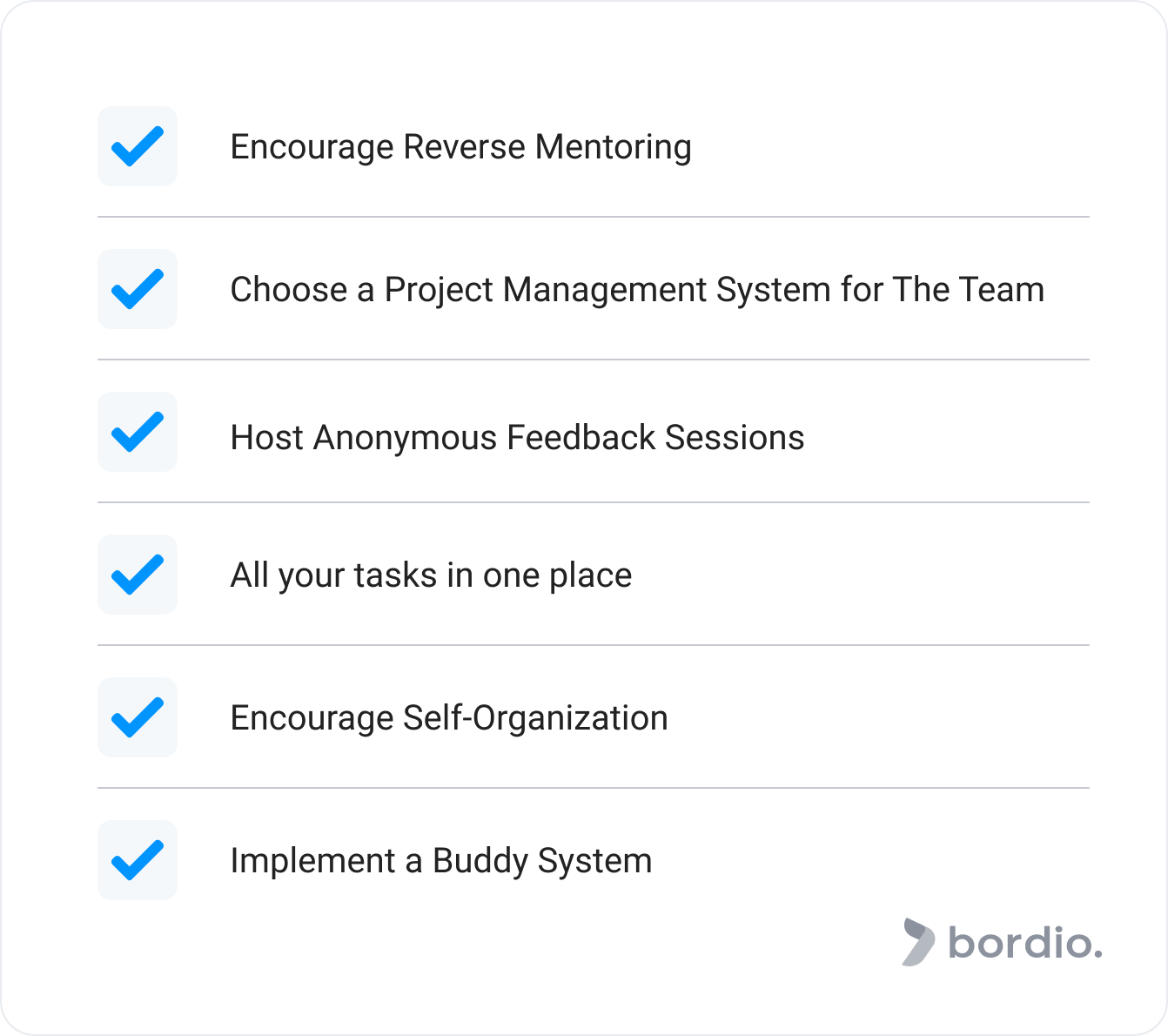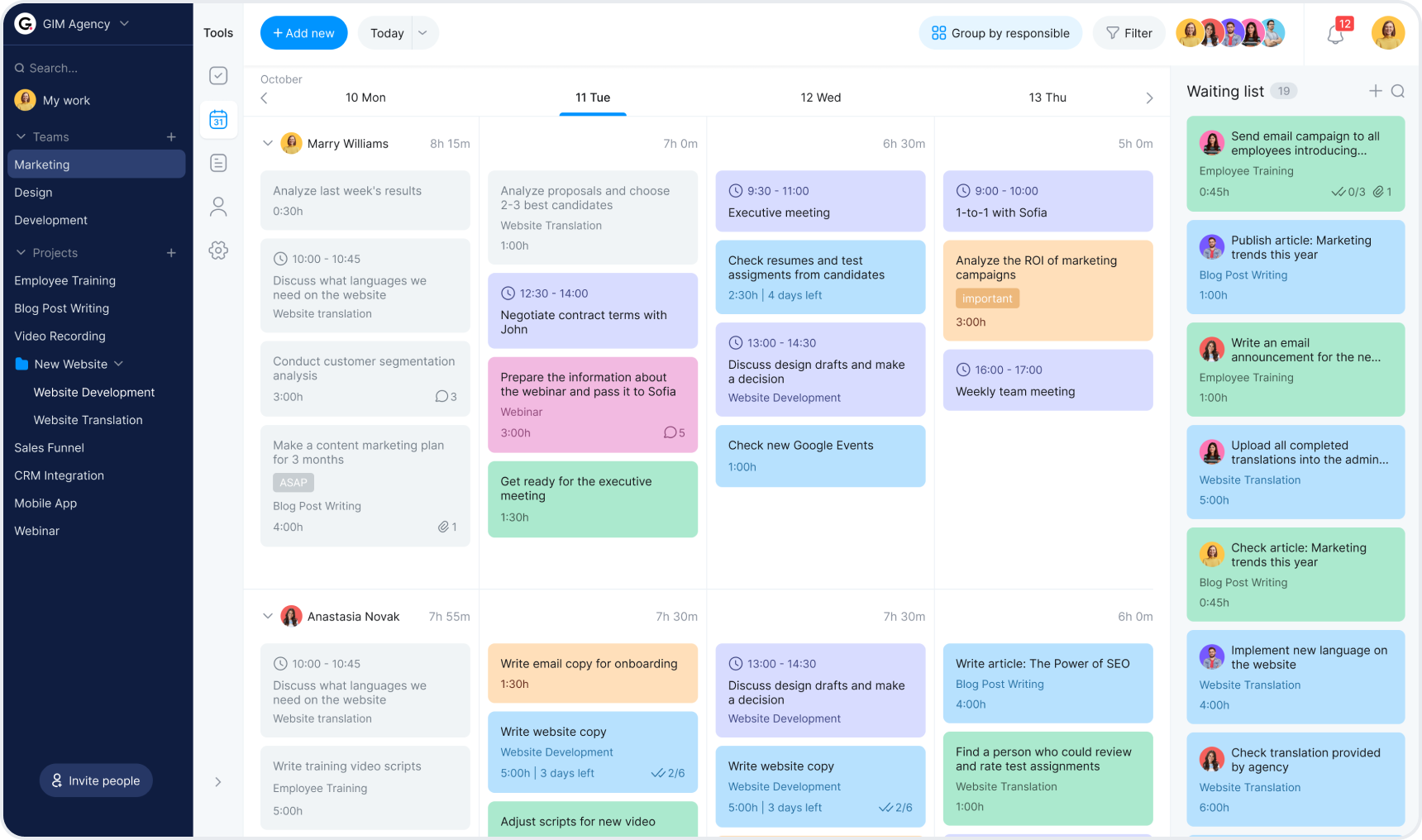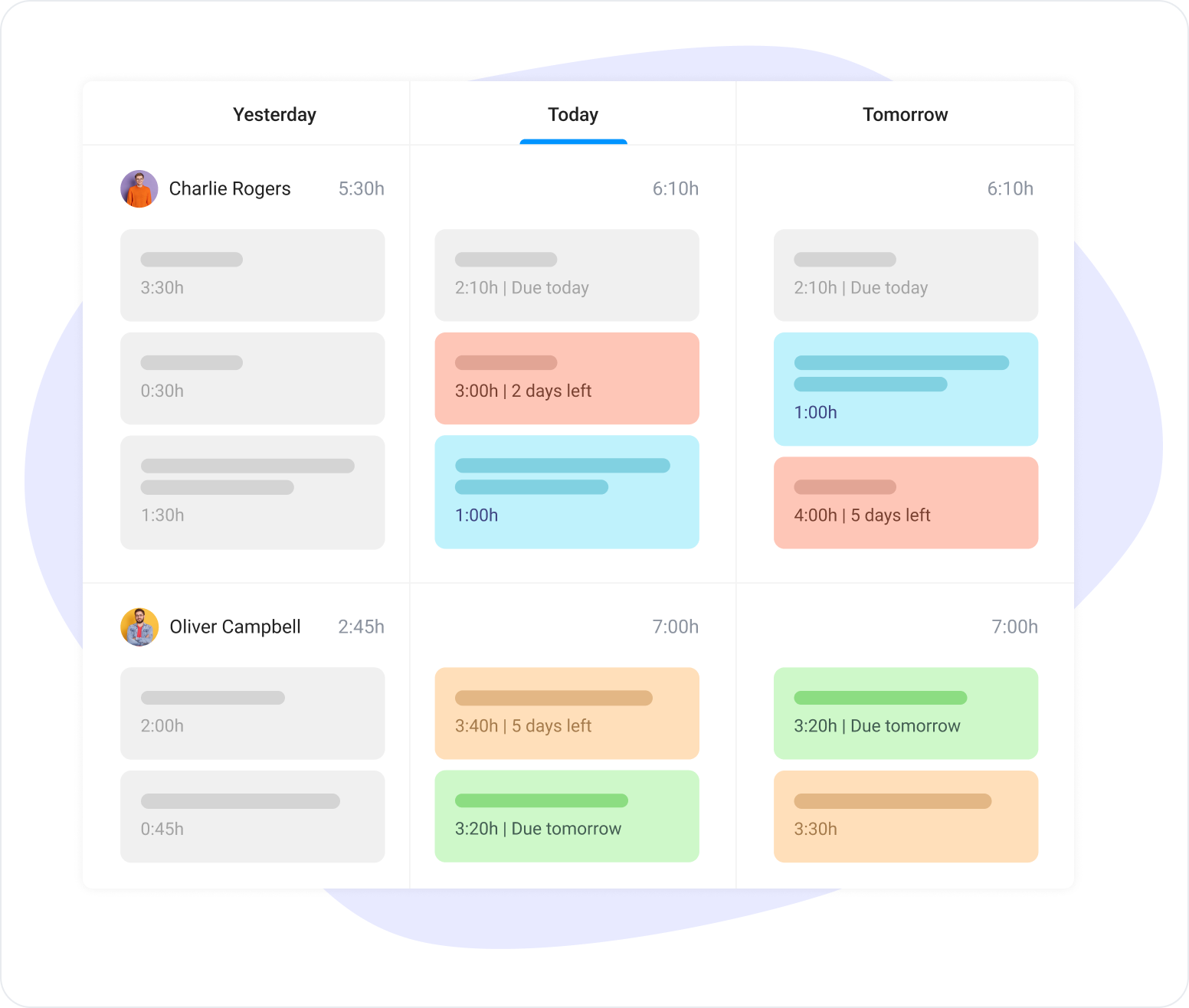Since you’ve clicked on this article, there are chances you’re running a growing business or managing large teams – that’s awesome! But maybe you’re also here because you want to improve team management. If you’ve handled small teams before and are now stepping up to larger ones, you’re in the right spot! We’ll look into the challenges you might face with a bigger team compared to a smaller one and offer some valuable key tips to improve overall performance.
The challenges of managing large teams
Shifting from managing small teams to large teams can bring on a lot of worries about the challenges you might face. Yes, sometimes it can be challenging, but have you ever heard of a large ship that couldn’t float? Let’s dive deeper into the problems that might pop up when you’re in charge of a large team and discuss ways to handle them.
Delegation and empowerment
When running a large group, it can be challenging to hand off tasks and let team members take charge. It is super important to find the right mix between being too controlling and letting people run with their tasks. You want to ensure that work is shared fairly and that everyone feels they can own their jobs and make them their own.
Solution: Empower team’s autonomy
Tackling the issue of handing off tasks and boosting self-reliance in a big team means you’ve got to get good at delegating and figuring out what needs to be done first. As the boss, you must get the hang of these methods and teach your team. Doing this builds a sense of responsibility and freedom among your team members and makes project planning much easyer. A project task tracker can be instrumental in assigning and monitoring progress on tasks, helping leaders ensure that everyone knows their responsibilities and timelines.
Start by making sure everyone knows exactly what their job is. Clear up any confusion about who’s supposed to do which task. Stop mix-ups and delegate tasks based on what each team member is good at. A good team leader of an effective team knows the team’s strengths. When tasks fit their skills, it’s more likely to do a great job and feel in charge of their work. Set clear goals – this keeps everyone on track and responsible, ensuring work gets done on time and fits the bigger picture of the project’s needs. This way, your large team will show its full potential.
Communication and coordination
Running a big team means dealing with many different kinds of people with unique skills and ways of working. As the team grows, ensuring everyone is talking and working together gets harder. Ensuring everyone understands the team’s goals, agrees with what the organization wants to achieve, and moves in the same direction can feel overwhelming.
Solution: Constructive and timely feedback
Ensuring everyone is in sync is critical when you’re in charge of a big team. One way to do this is by setting up regular meetings where the team can discuss their current projects, what they’ve accomplished, and any problems they face. Especially important to plan your communication during the projects. This helps keep everyone updated on what’s going on with the projects and the company’s objectives.
Use communication tools like emails, chat apps, video calls, and project management software to ensure communication is accessible and everyone can access the necessary information. It’s also important to check in with your team about communication. Ask for their opinions. This lets you identify any communication problems and figure out how to solve them. Training your team to boost their communication skills is another significant step. This helps them work better together by adjusting to different working styles and making sure everyone’s heard in the team.
Managing Conflict and resolution
The bigger your team gets, the more chances there are for disagreements. People might not see eye to eye, have different things they think are most important, or not get along, leading to tension in the team. Leaders need to spot these conflicts early and deal with them. It would be best to encourage everyone to talk openly and work together to find solutions that work well for everyone. This way, you can keep the peace and make sure your team works well together.
Solution: Early identification and ground rules
Deal with conflicts right when they pop up. Get your team to talk freely about any problems or worries, and be on the lookout for any signs of tension or disagreement. Make some clear rules for how to handle conflicts in the team. Spell out what kind of behavior and ways of talking are okay, and explain how conflicts should be dealt with when they happen.
If a conflict does happen, step in to help those involved find some common ground and figure out a solution. Offer your help and make sure everyone’s point of view is listened to and considered.
Maintaining morale and motivation
Boosting team spirit and keeping everyone motivated in a big team can be challenging. People might feel left out or stressed, making them less involved and productive. Leaders need to develop strategies to create a happy workplace, celebrate successes, and support team members to keep them driven.
Solution: Positive work environment
First, you must push for open and straight-up communication in your team. Make sure to give regular updates, pay attention to what your team has to say, and handle any problems immediately. Doing this helps your team members feel they matter and are actively involved in making decisions. Additionally, using a team productivity tracker can help measure performance and provide insights into how the team is progressing, ensuring everyone remains engaged and motivated to meet goals.
Give your team members more power by handing off tasks to them and letting them figure out the best way to do their work. Ensure they know what you expect and the goals, but be open to how they get there. When people feel they’re in charge of their tasks, they’re more likely to take responsibility and be driven.
Also, put together some team-building events! These will help your team members get closer. Whether going out together, having lunch as a group, or doing team-building activities online, these experiences build friendship and support, creating a more robust team atmosphere.
6 Tips on how to manage a large team
Let’s take a look at the tips on how to manage a large team like a pro.
Encourage reverse mentoring
Reverse mentoring flips the traditional mentoring script. Usually, when we think of mentoring, it’s someone with much experience sharing their knowledge with someone newer to the field. Reverse mentoring is the opposite. It’s when someone who might be younger or less experienced in general teaches someone older or more experienced about a specific area they know a lot about.
For example, imagine a young employee fresh out of college teaching a company director about the latest tech trends popular among the younger crowd. This kind of mentoring across generations can be mighty. The goals of setting up a reverse mentoring program depend on what a business wants to achieve. Say a company wants to do a better job supporting its female employees. In that case, they might set up a program where women in the early stages of their careers mentor senior staff members.
Many folks at the top find reverse mentoring incredibly valuable because it gives them a new perspective, helping them become better leaders. Plus, both the mentor and the mentee often say their communication skills get a boost from the experience. They learn a lot about how differences in age or generation can affect how people act and think.
Choose a project management system for the team
Choosing a project management system for a large team is an important step. This system should serve you as usefully as possible. To choose what’s best for your team, understand your team’s specific needs and requirements. Consider factors such as team size, project types, collaboration preferences, and existing workflows. A project task planner is essential in organizing and assigning tasks efficiently, ensuring that everyone knows their responsibilities and deadlines.
Consider the cost of the project management system and how it fits within your team’s budget. Evaluate pricing plans, including subscription fees, licensing, and additional fees for premium features or user upgrades. Consider whether the project management system can scale with your team as it grows. Make sure it can handle a growing number of users and projects without sacrificing performance or functionality.
Next, when everything is evident with the team’s needs, list the main functions and features your team needs in the project management system.
This may include:
- Task management
- Scheduling
- File sharing
- Communication features
- Calendar integration options
Bordio is a team project management software with all the essential features mentioned above. It’s a system that is intuitive and easy for your team to use. A user-friendly interface will encourage adoption and minimize training time. In Bordio, you can create and assign tasks and events; it won’t take long to create tasks with just a couple of clicks, and then you can assign the task to someone else. In this work management software, you can monitor your team’s and projects’ progress, leave notes, and easily control the workflow.
Bordio allows for easy collaboration and communication between team members, regardless of location. Look for features like real-time updates, commenting, and task assignments to facilitate teamwork and provide transparency.
Host anonymous feedback sessions
Providing feedback is integral to successful group management, whether large or small. Now, we are talking about constructive feedback on tasks from the boss and feedback from the group to the manager or leader. The feedback doesn’t need to be specifically about work, which is the case. Still, we also mean feedback on colleagues, the general atmosphere, the work schedule, and simply expressing complaints and preferences.
But of course, we understand that it is often difficult for people to express their thoughts in direct reports and provide feedback openly; for fear of punishment or condemnation, many turn a blind eye to the inconvenience and endure. However, a tolerant employee is like a time bomb that will sooner or later explode with unforeseen consequences.
Therefore, we recommend conducting periodic anonymous feedback sessions where team members can express concerns, suggestions, and ideas without fear of judgment or reprisal. This allows you to gather honest feedback and address any underlying issues affecting team morale or productivity.
All your tasks in one place
Managers might assign tasks directly to create solid relationships and open communication when managing a larger team. But suddenly, this simple approach to task distribution can lead to problems in the long run. Tasks may slip through the cracks or be forgotten altogether. Therefore, it is essential to implement a sound task management system from day one and carefully document all tasks.
Bordio is suitable as a complete task management solution. With Bordio, you can centralize all your tasks in one convenient place. Easily create and assign tasks to team members, ensuring everything is neatly organized and easily accessible.
Bordio allows you to seamlessly track your work progress using your phone or computer to stay connected anytime, anywhere. Plus, it integrates with your Google Calendar, providing a unified view of tasks and events. It’s a handy tool that streamlines task delegation and keeps everything neatly organized, eliminating the risk of tasks getting lost in random order.
Encourage self-organization
Managing a big team and keeping tabs on everything can be challenging. It’s a lot for a manager to handle all the work for a project or even multiple projects simultaneously. This includes handing out tasks, setting deadlines, and solving problems that pop up. It’s a good idea to let your team help out more to avoid feeling overwhelmed by all these tasks.
We’re not suggesting you quit your job; actually, it’s quite the opposite. What you need are team members who can work independently and take responsibility for their organization. Encourage your team to manage themselves by letting them decide together on project timelines, who does what tasks, and how to tackle problems. Give your team more control; start with something simple like preparing a to-do list on Bordio. Put these tasks in a backlog, then let your team members pick which tasks they’ll handle. This way, every member of a large team on team gets to have a say, feels more involved, and is held accountable, all while cutting down on unnecessary oversight.
Implement a buddy system
Pair team members as “buddies” to provide support, share knowledge, and foster stronger interpersonal connections. This enhances collaboration and helps new hires integrate into the team more quickly and feel supported. Budding is when someone who already knows the ropes at a company helps a new person settle in. It’s not about teaching them how to do their job; it’s more about helping them feel at home in the new workplace. This support is excellent for any business because it helps new employees feel more connected and can save the company time and money that would otherwise go to HR for onboarding.
Regular check-ins with a boss or mentor during the first three months can help a new employee hit the ground running. The person who acts as the “buddy” has been with the company for a while, typically 2-3 years, and knows how things work. This person is there to help the newcomer navigate the company culture and understand the ins and outs of the workplace, making their transition smoother.
Positive sides of managing a large team
Diverse Skill Sets and Perspectives: A large team often comprises individuals with diverse backgrounds, expertise, and perspectives. This diversity in team structure positively impacts team efficiency and productivity, leading to more creativity and innovation as each team member brings unique ideas and approaches.
Increased Capacity for Projects: With more team members, there’s a greater capacity to take on larger projects, tackle complex initiatives, and handle higher workloads. This scalability allows the team to be more agile and adaptable to changing priorities and demands.
Opportunities for Leadership Development: Managing a large team provides valuable opportunities for leadership development. Leaders can hone their delegation, communication, conflict resolution, and decision-making skills as they navigate the complexities of overseeing a larger group of people. We can say that this will be a valuable training experience for you.
More Potential for Impact and Success: A larger team has the potential to achieve more significant impact and success. With more resources, expertise, and workforce, the team can accomplish ambitious goals, deliver high-quality results, and make a significant difference within the organization or industry. This leads to a growth in the number of team achievements.
Final thoughts on managing large team
Running a big team is different from handling a small one, with ups and downs. Bosses must find the right mix of being in charge and letting people do their thing. They should give out jobs that play to each person’s strengths and help meet the team’s goals, ensuring everyone feels they’re an essential part of the team. It’s super important to talk clearly and work well in big teams to ensure everyone’s on the same page and working together, even if they have different skills.
It’s important to use systems for organizing tasks and getting feedback to make things run smoothly. Using tools like Bordio helps keep all the tasks in one place and lets us see how we’re doing. Also, having a way for team members to give feedback anonymously lets them share their thoughts and ideas without worrying about being judged. Good leadership, clear talking, and a supportive environment are essential for leaders to handle a big team well and ensure everyone works at their best.














